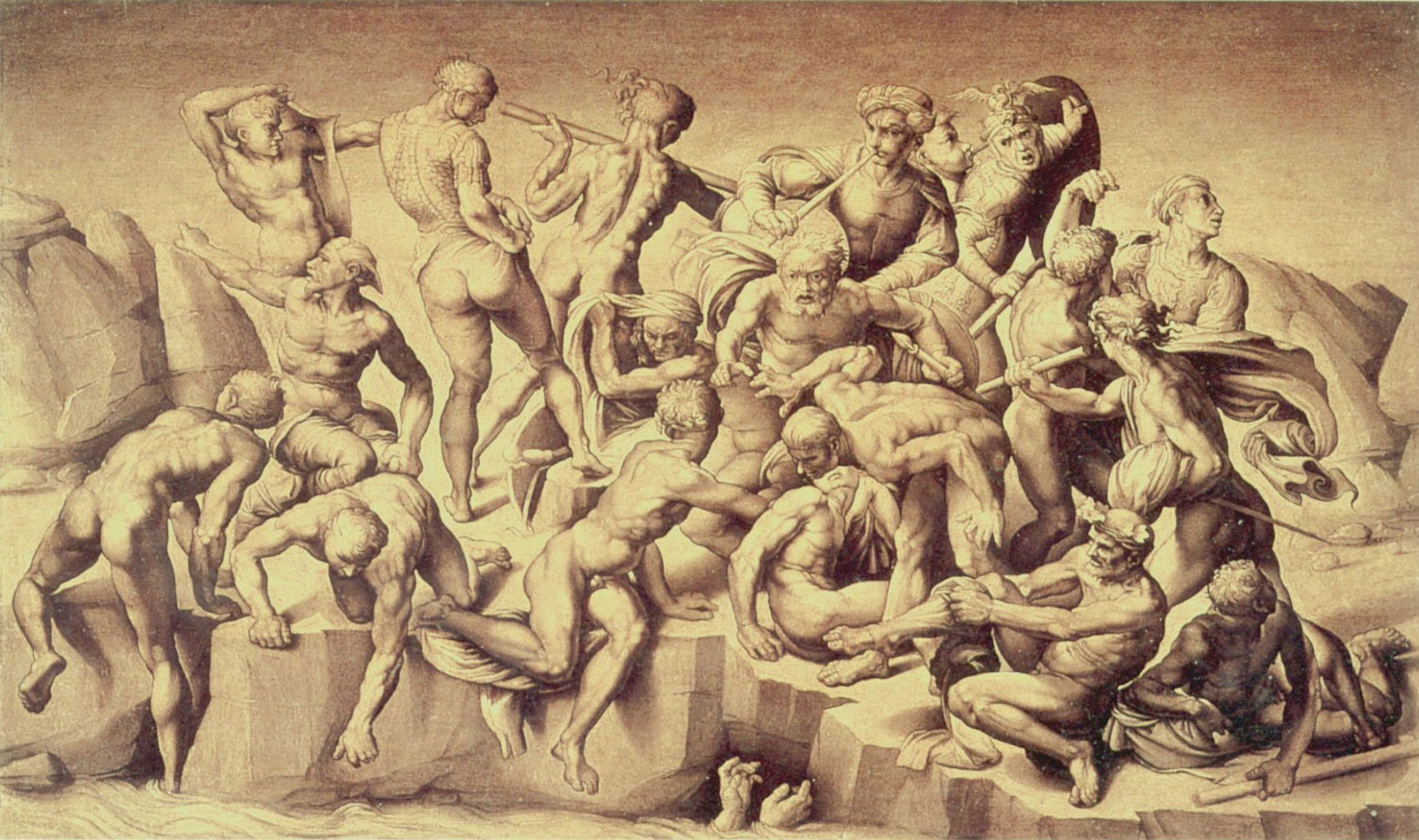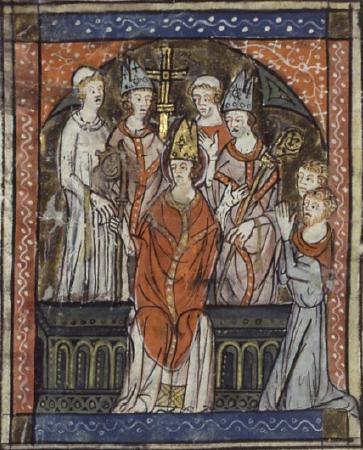|
Dutch Gable
A Dutch gable or Flemish gable is a gable whose sides have a shape made up of one or more curves and which has a pediment at the top. The gable may be an entirely decorative projection above a flat section of roof line, or may be the termination of a roof, like a normal gable (the picture of Montacute House, right, shows both types). The preceding is the strict definition, but the term is sometimes used more loosely, though the stepped gable should be distinguished from it. The term "Dutch gable" is also used in America and Australasia to refer to a gablet roof. The Dutch gable was a notable feature of the Renaissance architecture, which spread to northern Europe from the Low Countries, arriving in Britain during the latter part of the 16th century. Later Dutch gables with flowing curves became absorbed into Baroque architecture. Examples of Dutch-gabled buildings can be found in historic cities across Europe. In Potsdam, Germany, 150 red brick houses featuring steep Dut ... [...More Info...] [...Related Items...] OR: [Wikipedia] [Google] [Baidu] |
Montacute House Apr 2002
Montacute is a village and civil parishes in England, civil parish in Somerset, England, west of Yeovil. The village has a population of 831 (2011 census). The name Montacute is thought by some to derive from the Latin "Mons Acutus", referring to the conically acute St Michael's Hill dominating the village to the west. An alternative view is that it is named after Drogo de Montagu, whose family originated from Montaigu-les-Bois, in the arrondissement of Coutances. Robert, Count of Mortain held Montacute after 1066, and Drogo was a close associate of his. The village is built almost entirely of the local hamstone. From the 15th century until the beginning of the 20th century it formed the heart of the Estate (land), estate of the Phelips family of Montacute House. The village has a fine Middle Ages, medieval Church (building), church, and was the site of a Cluniac Reforms, Cluniac priory, the gatehouse of which is now a private house. At the centre of the village is a large To ... [...More Info...] [...Related Items...] OR: [Wikipedia] [Google] [Baidu] |
Belgium
Belgium, officially the Kingdom of Belgium, is a country in Northwestern Europe. Situated in a coastal lowland region known as the Low Countries, it is bordered by the Netherlands to the north, Germany to the east, Luxembourg to the southeast, France to the south, and the North Sea to the west. Belgium covers an area of and has a population of more than 11.8 million; its population density of ranks List of countries and dependencies by population density, 22nd in the world and Area and population of European countries, sixth in Europe. The capital and Metropolitan areas in Belgium, largest metropolitan region is City of Brussels, Brussels; other major cities are Antwerp, Ghent, Charleroi, Liège, Bruges, Namur, and Leuven. Belgium is a parliamentary system, parliamentary constitutional monarchy with a complex Federation, federal system structured on regional and linguistic grounds. The country is divided into three highly autonomous Communities, regions and language areas o ... [...More Info...] [...Related Items...] OR: [Wikipedia] [Google] [Baidu] |
Awning
An awning or overhang is a secondary covering attached to the exterior wall of a building. It is typically composed of canvas woven of Acrylic fiber, acrylic, cotton or polyester yarn, or vinyl laminated to polyester fabric that is stretched tightly over a light structure of aluminium, iron or steel, possibly wood or transparency and translucency, transparent material (used to cover solar thermal panels in the summer, but that must allow as much light as possible in the winter). The configuration of this structure is something of a truss, space frame or planar Framing (construction), frame. Awnings are also often constructed of aluminium understructure with aluminium sheeting. These aluminium awnings are often used when a fabric awning is not a practical application where snow load as well as wind loads may be a factor. Types Actuation Today's awnings come in two basic types: manually operated models which are opened by hand and motorized models which operate by electricity. ... [...More Info...] [...Related Items...] OR: [Wikipedia] [Google] [Baidu] |
Clock Gable
The clock gable (), also known as Dutch clock gable, is a gable or facade with decorative shape characteristic of traditional Architecture of the Netherlands, Dutch architecture. The top of the gable is shaped like the cross-section of a church bell. It was mostly used in houses that were rather narrow, with a width of the space taken by two or three windows. This type of gable was popular in the Netherlands during the 17th and 18th centuries. The earlier clock gables were usually lower and decorated in a different style in which flowers and fruits were present in the decorative elements. Clock gables made in the 18th century are usually decorated with Louis Quinze ornaments, resulting in more decorations added to the flowers and fruits. Clock gables are also present in Cape Dutch architecture, in what was South Africa's Cape Province. See also *Dutch gable *Stepped gable *Cape Dutch architecture References External links {{commonscat, Clock gablesA Touch of Dutch: Klokgevel (Cl ... [...More Info...] [...Related Items...] OR: [Wikipedia] [Google] [Baidu] |
Obelisk
An obelisk (; , diminutive of (') ' spit, nail, pointed pillar') is a tall, slender, tapered monument with four sides and a pyramidal or pyramidion top. Originally constructed by Ancient Egyptians and called ''tekhenu'', the Greeks used the Greek term to describe them, and this word passed into Latin and ultimately English. Though William Thomas used the term correctly in his ''Historie of Italie'' of 1549, by the late sixteenth century (after reduced contact with Italy following the excommunication of Queen Elizabeth), Shakespeare failed to distinguish between pyramids and obelisks in his plays and sonnets. Ancient obelisks are monolithic and consist of a single stone; most modern obelisks are made of several stones. Ancient obelisks Egyptian Obelisks were prominent in the architecture of the ancient Egyptians, and played a vital role in their religion placing them in pairs at the entrance of the temples. The word "obelisk" as used in English today is of Greek rathe ... [...More Info...] [...Related Items...] OR: [Wikipedia] [Google] [Baidu] |
Stepped Gable
A stepped gable, crow-stepped gable, or corbie step is a stairstep type of design at the top of the triangular gable-end of a building. The top of the parapet wall projects above the roofline and the top of the brick or stone wall is stacked in a step pattern above the roof as a decoration and as a convenient way to finish the brick courses. A stepped parapet may appear on building facades with or without gable ends, and even upon a false front. Geography The oldest examples can be seen in Ghent (Flanders, Belgium) and date from the 12th century, such as the house called ''Spijker'' on the ''Graslei'', and some other Romanesque buildings in the city. From there, they spread to the whole of Northern Europe from the 13th century, in particular in cities of the Hanseatic League (with brick Gothic style), and then to Central Europe by the next century. These gables are numerous in Belgium, France (French Flanders, Eastern Normandy, Picardy and Alsace), the Netherlands, all Germ ... [...More Info...] [...Related Items...] OR: [Wikipedia] [Google] [Baidu] |
Italian Renaissance
The Italian Renaissance ( ) was a period in History of Italy, Italian history between the 14th and 16th centuries. The period is known for the initial development of the broader Renaissance culture that spread across Western Europe and marked the transition from the Middle Ages to modernity. Proponents of a "long Renaissance" argue that it started around the year 1300 and lasted until about 1600. In some fields, a Italian Renaissance painting#Proto-Renaissance painting, Proto-Renaissance, beginning around 1250, is typically accepted. The French word (corresponding to in Italian) means 'rebirth', and defines the period as one of cultural revival and renewed interest in classical antiquity after the centuries during what Renaissance humanism, Renaissance humanists labelled as the Dark Ages (historiography), "Dark Ages". The Italian Renaissance historian Giorgio Vasari used the term ('rebirth') in his ''Lives of the Most Excellent Painters, Sculptors, and Architects'' in 1550, bu ... [...More Info...] [...Related Items...] OR: [Wikipedia] [Google] [Baidu] |
Mannerism
Mannerism is a style in European art that emerged in the later years of the Italian High Renaissance around 1520, spreading by about 1530 and lasting until about the end of the 16th century in Italy, when the Baroque style largely replaced it. Northern Mannerism continued into the early 17th century. Mannerism encompasses a variety of approaches influenced by, and reacting to, the harmonious ideals associated with artists such as Leonardo da Vinci, Raphael, Vasari, and early Michelangelo. Where High Renaissance art emphasizes proportion, balance, and ideal beauty, Mannerism exaggerates such qualities, often resulting in compositions that are asymmetrical or unnaturally elegant. Notable for its artificial (as opposed to naturalistic) qualities, this artistic style privileges compositional tension and instability rather than the balance and clarity of earlier Renaissance painting. Mannerism in literature and music is notable for its highly florid style and intellectual sophist ... [...More Info...] [...Related Items...] OR: [Wikipedia] [Google] [Baidu] |
Flashing (weatherproofing)
Flashing is thin pieces of impervious material installed to prevent the passage of water into a structure from a joint or as part of a weather resistant barrier system. In modern buildings, flashing is intended to decrease water penetration at objects such as chimneys, vent pipes, walls, windows and door openings to make buildings more durable and to reduce indoor Mold (fungus), mold problems. Metal flashing materials include lead, aluminium, copper, stainless steel, Zinc, zinc alloy, and other materials. Etymology and related terms The origin of the term ''flash'' and ''flashing'' are uncertain, but may come from the Middle English verb ''flasshen'', 'to sprinkle, splash', related to ''flask''. ''Counter-flashing'' (or ''cover flashing'', ''cap flashing'') is a term used when there are two parallel pieces of flashing employed together such as on a chimney, where the counter-flashing is built into the chimney and overlaps a replaceable piece of ''base flashing''. Strips of lead ... [...More Info...] [...Related Items...] OR: [Wikipedia] [Google] [Baidu] |
Cape Dutch Architecture
Cape Dutch architecture is an architectural style primarily found in the Western Cape of South Africa, though modern adaptations have been constructed in regions such as Western Australia and New Zealand, typically on wine estates. The style emerged in the 17th century during the early years of the Dutch Cape Colony, and is named after the Dutch settlers who played a significant role in its development. Influences on the style can be traced to medieval architectural traditions from the Netherlands, Germany, France, and Indonesia. Architectural features A notable feature of Cape Dutch buildings is the grand, ornately rounded clock gable, similar to those seen in Dutch townhouses in Amsterdam, the Netherlands, built in the Dutch style. However, this is not a defining feature of the style, as some Cape Dutch buildings, such as the ''Uitkyk'' manor house in Stellenbosch, South Africa, do not have gables but are still considered part of the style. In the late 18th century, a va ... [...More Info...] [...Related Items...] OR: [Wikipedia] [Google] [Baidu] |
South Africa
South Africa, officially the Republic of South Africa (RSA), is the Southern Africa, southernmost country in Africa. Its Provinces of South Africa, nine provinces are bounded to the south by of coastline that stretches along the Atlantic Ocean, South Atlantic and Indian Ocean; to the north by the neighbouring countries of Namibia, Botswana, and Zimbabwe; to the east and northeast by Mozambique and Eswatini; and it encloses Lesotho. Covering an area of , the country has Demographics of South Africa, a population of over 64 million people. Pretoria is the administrative capital, while Cape Town, as the seat of Parliament of South Africa, Parliament, is the legislative capital, and Bloemfontein is regarded as the judicial capital. The largest, most populous city is Johannesburg, followed by Cape Town and Durban. Cradle of Humankind, Archaeological findings suggest that various hominid species existed in South Africa about 2.5 million years ago, and modern humans inhabited the ... [...More Info...] [...Related Items...] OR: [Wikipedia] [Google] [Baidu] |
Arras
Arras ( , ; ; historical ) is the prefecture of the Pas-de-Calais department, which forms part of the region of Hauts-de-France; before the reorganization of 2014 it was in Nord-Pas-de-Calais. The historic centre of the Artois region, with a Baroque town square, Arras is in northern France at the confluence of the rivers Scarpe and Crinchon. The Arras plain is on a large chalk plateau bordered on the north by the Marqueffles fault, on the southwest by the Artois and Ternois hills, and on the south by the slopes of Beaufort-Blavincourt. On the east it is connected to the Scarpe valley. Saint Vedast (or St. Vaast) was the first Catholic bishop in the year 499 and tried to eliminate paganism among the Franks. By 843, Arras was seat of the County of Artois which became part of the Royal domain in 1191. The first mention of the name ''Arras'' appeared in the 12th century. Some hypothesize it is a contraction of '' Atrebates'', a Belgic tribe of Gaul and Britain that u ... [...More Info...] [...Related Items...] OR: [Wikipedia] [Google] [Baidu] |








